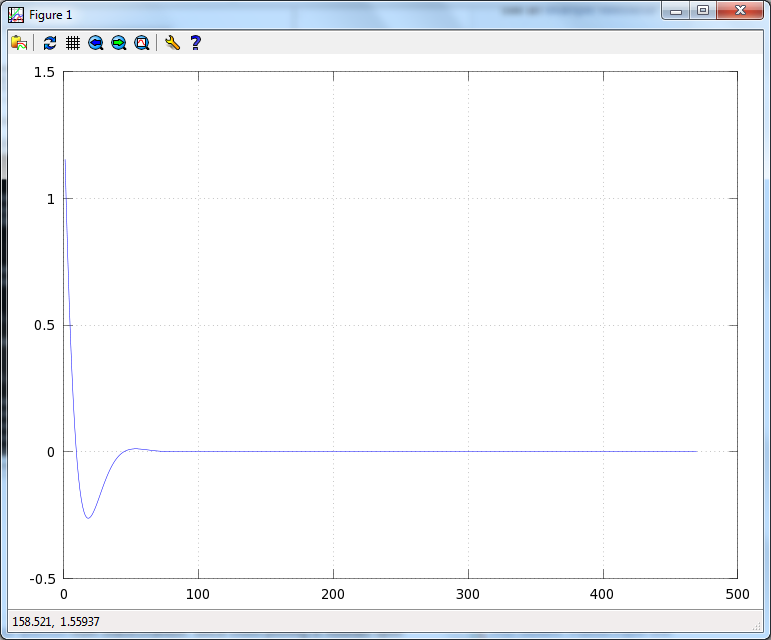I recently implemented a Butterworth high-pass filter (2nd order). Everything seems to work fine, except that I have a question when applying such a filter to a constant signal. As there are no high-frequency components in a constant signal, I would expect the filter to yield a constant 0 signal.
In the plots below are my results. There seems to be ``ripple'' in the first couple of frames before the high-pass filtered signal (correctly) converges to 0.
Is this a logical result from applying a Butterworth high-pass filter on a constant signal, or might there be a bug in my code?
EDIT: I've created the same filter in Octave, resulting in the same output. This indicates that we're indeed looking at the step response, as Paul R. indicates.

Octave output

filtfiltif you really want to, but that is only for an off-line processing. $\endgroup$